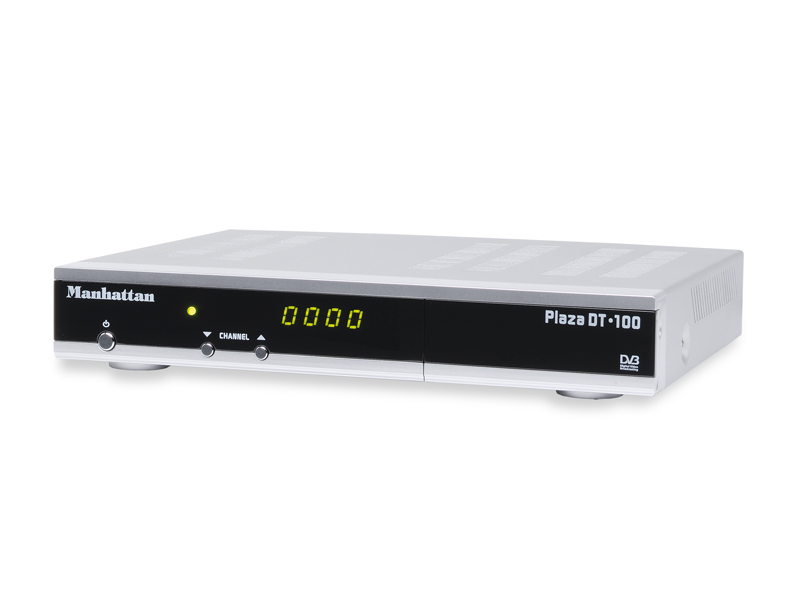TechRadar Verdict
Pros
- +
AV performance
- +
Tuner
- +
Build quality
Cons
- -
EPG a little sluggish
- -
Not the cheapest adapter you can buy
Why you can trust TechRadar
Switchover is well under way, but there are still thousands of outmoded TV sets in need of an upgrade. Not that there's any shortage of Freeview-equipped set-top boxes on the market, or course.
But should you go for the sort of cheap and cheerful box being sold in some supermarkets – or pay extra for something built with a bit more care and attention?
Manhattan is gambling on the latter, but is at pains to emphasise that the DT-100 has been made with demands from installers for a 'good quality' adapter in mind. The Plaza satellite range is well regarded and the build quality of its first digital terrestrial offering doesn't disappoint.
Thoughtful design
It's roughly the size of two paperback books, and a large four-digit green LED display shows the number of the channel you're watching, beneath which you'll find buttons for channel-changing and standby.
On the rear panel, we find a dedicated power switch for the energy-conscious and a UHF loopthrough supported by a modulator for those Scart-starved TVs that require it.
There are two Scart outputs, each of which is blessed with RGB as well as a composite output allowing for higher quality external recordings. There's no upscaling HDMI option as found on recent adapters and PVRs by the likes of Goodmans but this is no great loss, as many TVs have their own DTT picture-enhancing prowess.
There's also a separate composite video output, plus stereo phonos and an SP/DIF digital audio output. An RS232 serial port is included, although software updates are made available over the air.
The small remote control is similar to that found with the latest Plaza satellite receivers; it won't win any design awards but sits well in the hand and is intelligently organised – and the receiver proved very responsive to it.
Sluggish EPG
The automatic scan quickly found channels in our test area (you can also manually configure the scan), leading us onto a logically-arranged menu system. You can skip between TV and radio channels with a single button press and re-order and delete them by bringing up the full list.
Ten favourites lists can be created with up to 22 channels in each and you can rename channels (using an onscreen keyboard), delete them or move them around.
The EPG shows seven days of data displayed as a grid of programmes, five channels at a time with a summary for the selected programme displayed in the top left and the current channel showing in the top right.
You can skip data day by day, but although the EPG is quick to populate, scrolling is a bit sluggish when browsing by channel or skipping through the programme grid.
Setting timers
You can set up timed events directly from the EPG or manually with a limit of eight events over one year with once, daily and weekly repeat options. Each channel is accompanied by a programme info bar that can be expanded to show now-and-next information for the current channel and others without needing to leave the one you're watching.
The DT-100 isn't a PVR but it does have a neat 'trickplay' feature – Instant Replay. Confusingly accessed by pressing 'Pause', this creates a one-second loop of the channel you're watching. Pressing Pause again returns you to the current live channel – a feature likely to prove useful during football matches. And you can generate a nine-screen mosaic of grabs to preview what's on other channels.
Solid sound
Channels can be viewed in centre cutout, full frame or letterbox modes. Generally, picture quality is of a high standard if your aerial is up to scratch, delivering natural-looking, colourful results displaying a minimum of artefacts, other than on lower-quality channels where it's unavoidable.
Sound quality is also robust even without hooking up the crisp digital audio option.
The DT-100 doesn't come cheap (comparatively) but it still ticks the boxes of what's required in an above-average Freeview adapter, making it worth boycotting the electronics section of your supermarket for something with a longer shelf life.
